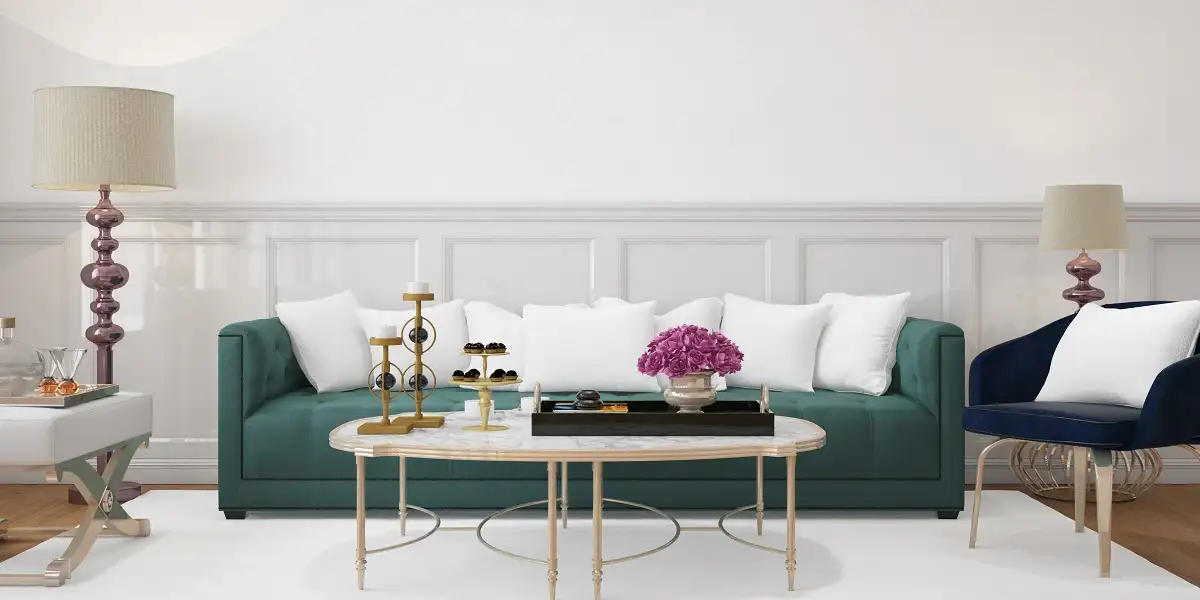Welcome to DecoratorAdvice.com, the premier destination for all your home decorating and interior design needs. Whether you’re looking to transform a single room or your entire home, we provide expert advice, innovative ideas, and practical tips to help you create spaces that reflect your personal style and enhance your living environment. This comprehensive guide will walk you through various aspects of home decor, from color schemes and furniture selection to lighting and accessories.
Understanding Your Style
Before diving into the specifics of home decor, it’s essential to understand your personal style. Your home should be a reflection of who you are, and identifying your preferences will make the decoratoradvice .com process smoother and more enjoyable.
Popular Interior Design Styles
- Modern: Characterized by clean lines, minimalistic elements, and a neutral color palette, modern design focuses on simplicity and functionality. Materials like glass, metal, and steel are commonly used.
- Traditional: This style is rooted in classic European decor, featuring rich colors, ornate details, and elegant furnishings. Think of opulent fabrics, carved wood, and intricate patterns.
- Contemporary: While often confused with modern design, contemporary style is ever-evolving, focusing on current trends. It includes a mix of comfort, sophistication, and a variety of colors and textures.
- Rustic: Emphasizing natural materials and a warm, cozy feel, rustic decor often incorporates elements like exposed beams, reclaimed wood, and earthy tones.
- Industrial: Inspired by urban lofts and warehouses, industrial design features raw materials, such as brick, concrete, and metal. It’s known for its unfinished, edgy aesthetic.
- Bohemian: This eclectic style is all about individuality and creativity, blending vibrant colors, diverse patterns, and a mix of vintage and global influences.
Finding Your Style
To identify your style, start by gathering inspiration. Use resources like Pinterest, Instagram, and interior design magazines to collect images of spaces that resonate with you. Pay attention to recurring themes, colors, and furniture styles. You can also take online quizzes designed to pinpoint your interior design preferences.
Creating a Cohesive Color Scheme
Color is a powerful tool in home decor, setting the mood and influencing how a space is perceived. Here are some tips to help you choose the perfect color scheme for your home.
Color Theory Basics
Understanding the color wheel and basic color theory can guide you in creating harmonious color schemes. The color wheel consists of primary, secondary, and tertiary colors, which can be combined in various ways:
- Monochromatic: Variations of a single color, using different shades, tints, and tones.
- Analogous: Colors that are next to each other on the color wheel, creating a harmonious and serene look.
- Complementary: Colors that are opposite each other on the color wheel, providing a high contrast and vibrant look.
- Triadic: Three colors that are evenly spaced around the color wheel, offering a balanced and dynamic palette.
Choosing Colors for Each Room
Consider the function and desired atmosphere of each room when selecting colors:
- Living Room: Opt for warm, inviting colors like beige, taupe, or soft greens to create a comfortable and welcoming space.
- Kitchen: Bright, energizing colors such as white, yellow, or light blue can make the kitchen feel fresh and clean.
- Bedroom: Soothing colors like soft blues, greens, or neutrals are ideal for promoting relaxation and restful sleep.
- Bathroom: Light, airy colors like white, light gray, or pastel shades can make a small bathroom feel larger and more serene.
- Home Office: Colors that boost productivity and focus, such as greens, blues, or muted earth tones, are perfect for a work environment.
Selecting the Right Furniture
Furniture plays a crucial role in both the functionality and aesthetic of a room. Here are some guidelines to help you make the best choices:
Quality Over Quantity
Investing in high-quality furniture can save you money in the long run. Well-made pieces are more durable and often more comfortable than cheaper alternatives. Look for solid construction, good materials, and timeless designs.
Scale and Proportion
Choose furniture that fits the scale of your room. Large pieces can overwhelm a small space, while small furniture might look lost in a large room. Ensure there’s enough space to move around comfortably without overcrowding the area.
Functionality
Consider the purpose of each piece of furniture. Multifunctional furniture, like sofa beds or extendable dining tables, can be especially useful in smaller homes. Ensure that each piece serves a practical purpose while also contributing to the overall decor.
Style Consistency
While it’s fun to mix and match different styles, maintaining some consistency helps create a cohesive look. Choose furniture that complements the overall theme of your home, whether it’s modern, rustic, or eclectic.
Lighting: The Key to Ambiance
Lighting is a critical element in home decor, affecting both the functionality and mood of a space. Here’s how to use lighting effectively:
Layered Lighting
Use a combination of ambient, task, and accent lighting to create a well-lit, versatile space:
- Ambient Lighting: This is the primary source of light in a room, usually provided by ceiling fixtures, chandeliers, or recessed lighting.
- Task Lighting: Focused lighting that helps with specific tasks, such as reading lamps, under-cabinet lighting in the kitchen, or desk lamps in the office.
- Accent Lighting: decoratoradvice .com lighting used to highlight features like artwork, architectural details, or plants. Examples include wall sconces, picture lights, and LED strips.
Light Bulb Choices
The type of light bulb you choose affects the color temperature and brightness of your lighting:
- Incandescent Bulbs: Provide a warm, soft light but are less energy-efficient.
- LED Bulbs: Highly energy-efficient with a variety of color temperatures, from warm white to daylight.
- CFL Bulbs: More energy-efficient than incandescent but not as long-lasting as LEDs.
Natural Light
Maximize natural light by using sheer curtains, strategically placing mirrors to reflect light, and choosing light-colored furnishings and walls. Natural light not only brightens a space but also enhances mood and well-being.
Adding the Finishing Touches
Accessories and decor items are what bring a room to life, adding personality and style. Here are some tips for selecting and arranging these finishing touches:
Wall Art
Choose artwork that complements your color scheme and reflects your personal style. Arrange pieces at eye level and consider grouping smaller pieces together for a gallery wall effect.
Rugs and Textiles
Rugs, cushions, and throws add warmth, color, and texture to a room. When selecting a rug, ensure it’s the right size for your space—large enough to anchor your furniture but not so large that it overwhelms the room.
Plants
Indoor plants bring a touch of nature indoors, improving air quality and adding a fresh, vibrant feel. Choose low-maintenance plants like snake plants, pothos, or succulents if you’re new to plant care.
Personal Items
Incorporate personal items like family photos, travel souvenirs, or heirlooms to make your space uniquely yours. These items add character and tell a story, making your home feel more personal and inviting.
Keeping Up with Trends
While it’s important to create a home that reflects your personal style, keeping an eye on current trends can provide fresh inspiration and ideas. Here are some trends to watch for in 2024:
Sustainable Design
Eco-friendly materials and sustainable practices are increasingly popular. Look for furniture made from reclaimed wood, natural fibers, and environmentally-friendly finishes.
Smart Homes
Integrating technology into your home can enhance convenience and efficiency. Consider smart lighting, thermostats, and home security systems to streamline your daily routines.
Maximalism
After years of minimalism, maximalism is making a comeback. Bold colors, rich textures, and eclectic decor create vibrant, dynamic spaces full of personality.
Biophilic Design
This trend focuses on incorporating natural elements into interior design, such as indoor gardens, water features, and natural materials, to create a connection with nature and improve well-being.
Conclusion
At DecoratorAdvice.com, our goal is to provide you with the knowledge and inspiration you need to create a home that is beautiful, functional, and uniquely yours. Whether you’re starting from scratch or looking to refresh your existing decor, our comprehensive guides and expert tips will help you every step of the way. Remember, the best home decor reflects your personality and meets your lifestyle needs. Happy decorating! See more




